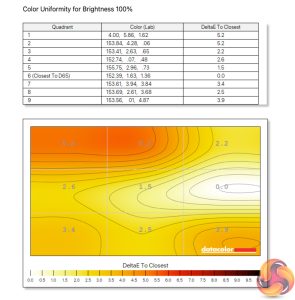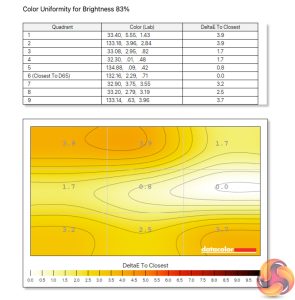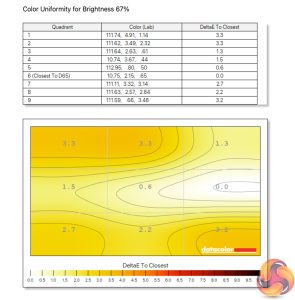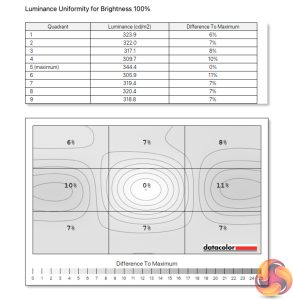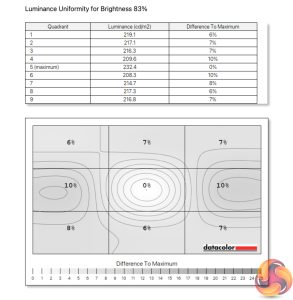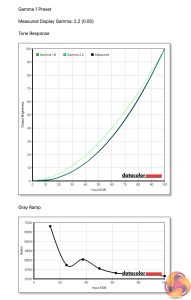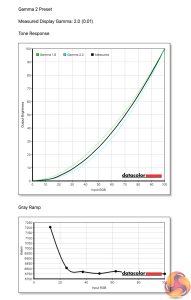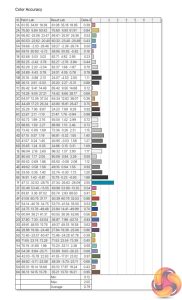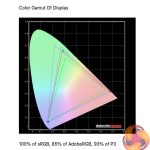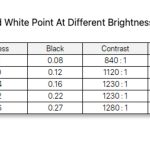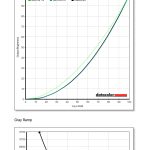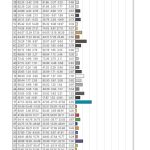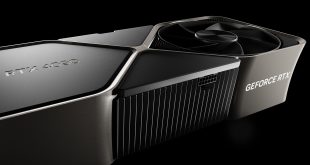Our main test involves using a DataColor SpyderX Colorimeter to assess a display’s image quality. The device sits on top of the screen while the software generates colour tones and patterns, which it compares against predetermined values to work out how accurate the screen is.
The results show –
- A monitor’s maximum brightness in candelas or cd/m2 at various levels set in the OSD.
- A monitor’s contrast ratio at various brightness levels in the OSD.
- The brightness deviation across the panel.
- The black and white points.
- The colour accuracy, expressed as a Delta E ratio, with a result under 3 being fine for normal use, and under 2 being great for colour-accurate design work.
- The exact gamma levels, with a comparison against preset settings in the OSD.
We first run this test with the display in its default, out-of-the-box state, with all settings on default. We then calibrate the screen using the Spyder software and run the test again.
Pre-calibration
Starting our testing with the AG405UXC's gamut performance, it does well here, offering 100% sRGB, 86% Adobe RGB and 94% DCI-P3 coverage. Those may not be pro-grade numbers but for a gaming-oriented display, that's a solid showing.
Colour temperature uniformity is less impressive, with some aberrance coming in the top left-hand corner – we know it is often hard to get the uniformity spot on with such large displays. That said, uniformity is better at lower brightness levels, so it depends on your use-case.
The same goes for luminance uniformity, as we saw up to 11% deviation (38.5 nits), with the left and right sides proving the most problematic. I can't say I noticed this in regular use or while gaming, and usually this sort of luminance variation is only a real problem for professional users, but it's worth noting.
Overall brightness is solid though. We measured a peak of 345 nits, and it could drop as low as 68 nits. Neither result is jaw dropping, but for a screen of this size and at this price, it's hard to argue too much. Contrast, however, is impressive for an IPS panel, hitting 1340:1 – even exceeding AOC's claimed 1200:1 ratio, which is great to see. The white point is also where we want it, ranging from 6400K-6700K depending on the brightness used.
The good results continue when looking at the Gamma settings. The default option is simply called Gamma 1, which delivers an average gamma value of 2.2 – exactly what we want to see. The Gamma 2 setting delivers 2.0 gamma, and Gamma 3 delivers a reading of 2.4, so no complaints from us there.
The impressive set of test results are rounded off by some excellent colour accuracy. We get an average DeltaE of just 0.79, and a maximum of 2.55, putting this up there with some of the best screens we've tested – good job, AOC!
Post-calibration
We also fired up the SpyderX for some calibration. This won't be necessary for most, but it did help improve colour accuracy slightly, down to a new average DeltaE of just 0.60
 KitGuru KitGuru.net – Tech News | Hardware News | Hardware Reviews | IOS | Mobile | Gaming | Graphics Cards
KitGuru KitGuru.net – Tech News | Hardware News | Hardware Reviews | IOS | Mobile | Gaming | Graphics Cards




